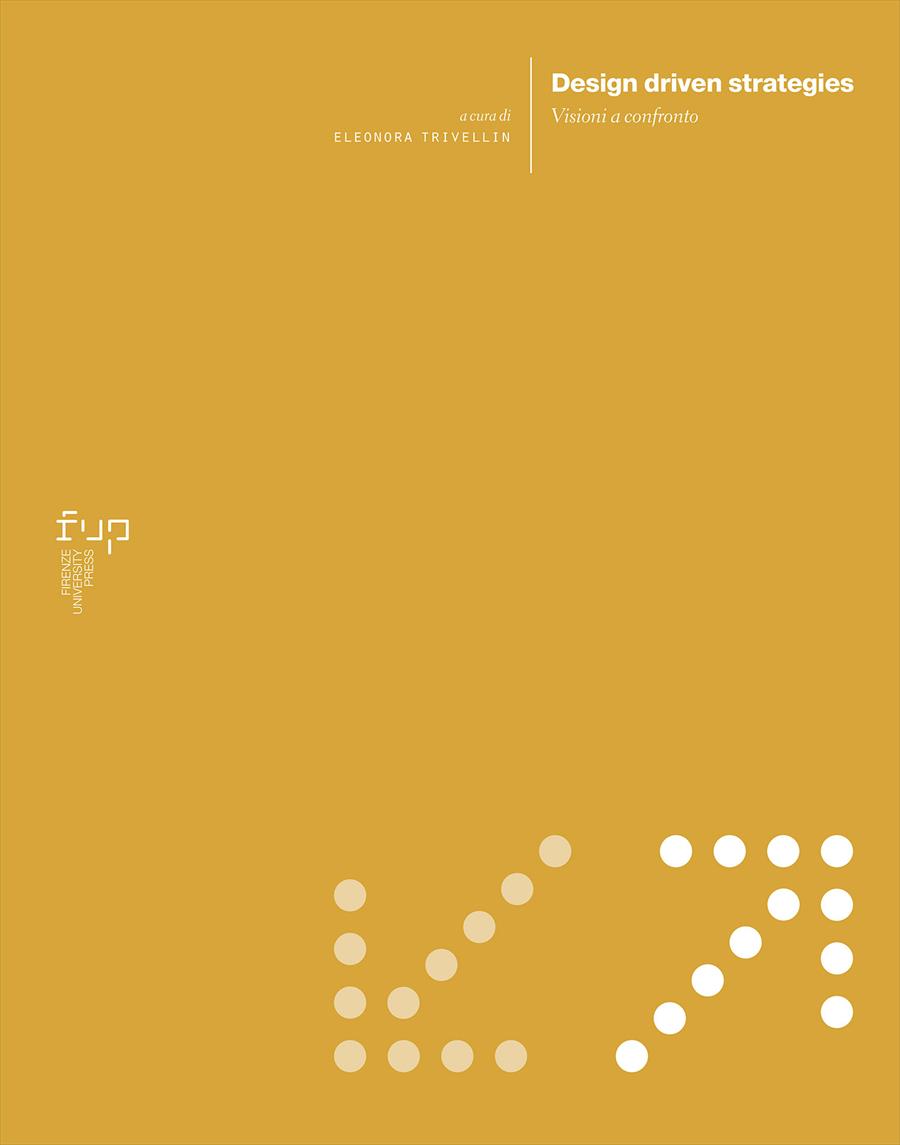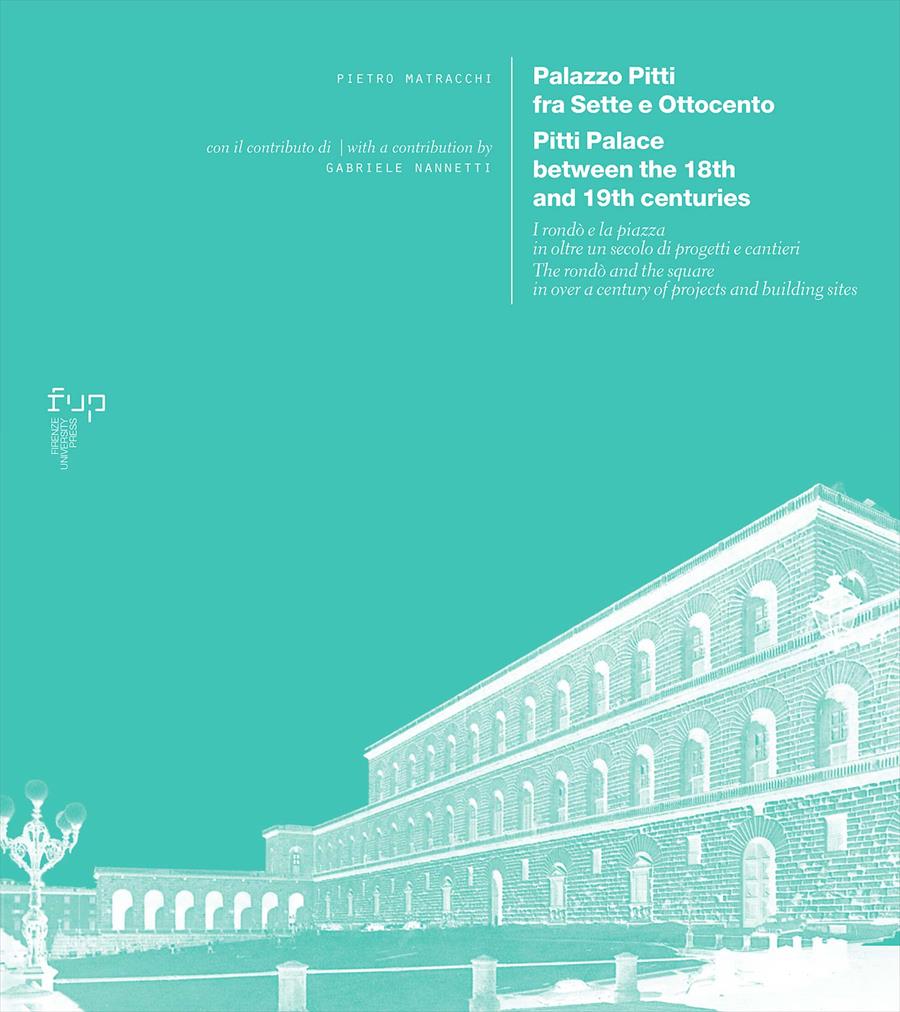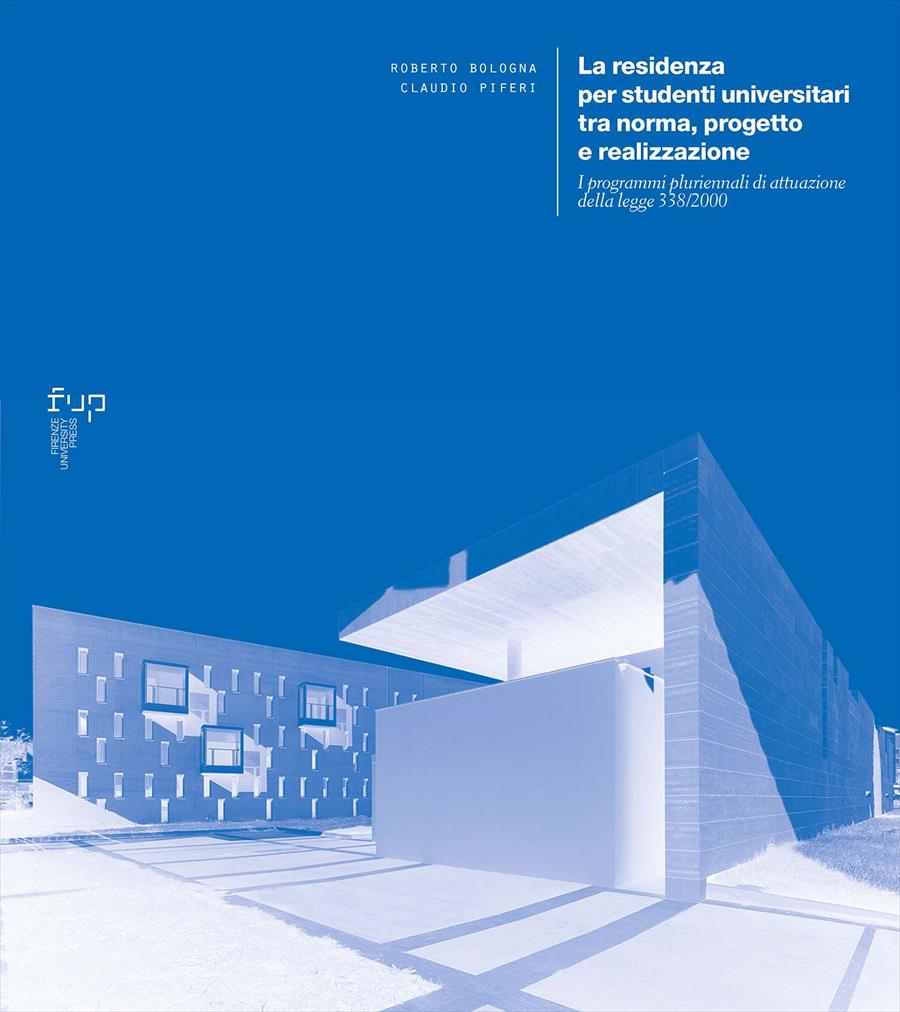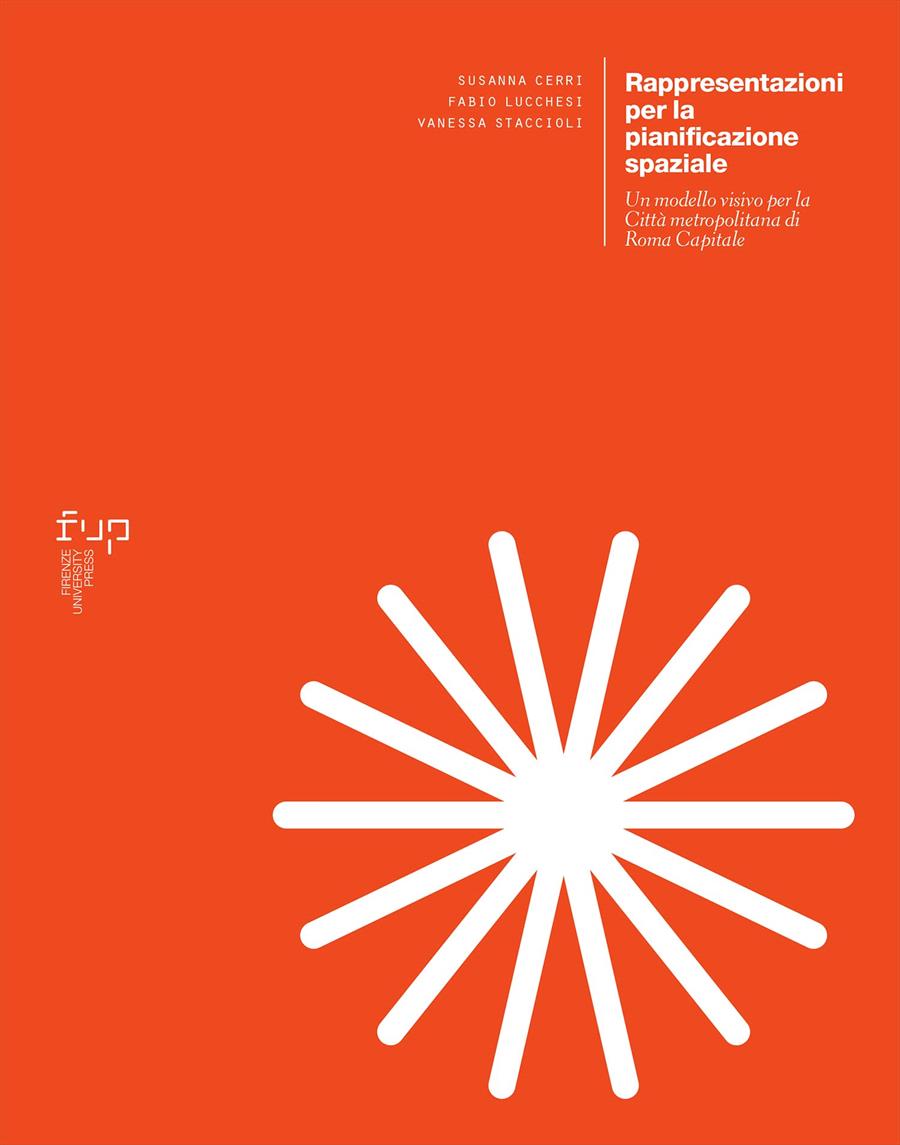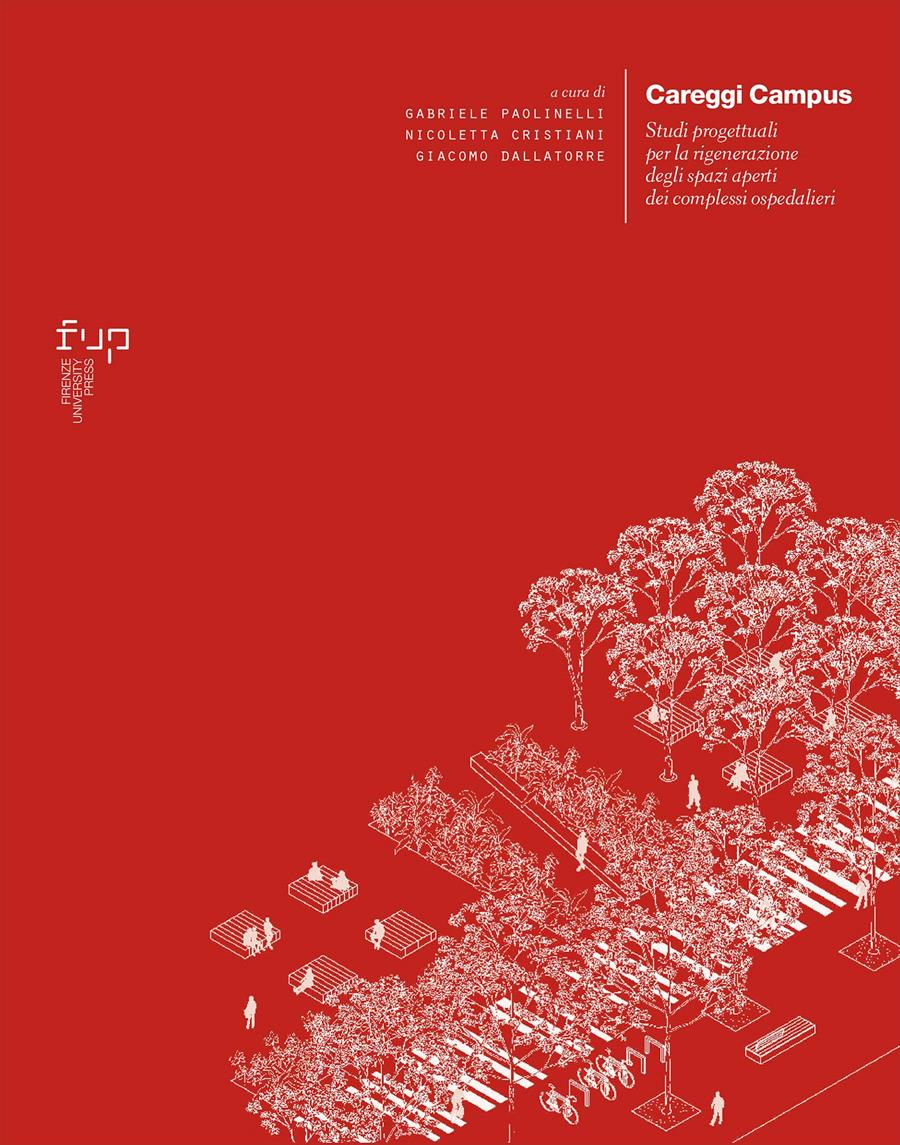Design driven strategies
Visioni a confronto
- Edited by:
- Eleonora Trivellin,
The collection of contributions in this volume looks forward, and also backward, regarding the centrality of design between new and traditional production systems, space-environment-sustainability, and identity. The role of the project in defining forms, material and immaterial, is crucial for their understanding and, consequently, for building participation. In the majority of the interventions, there is an underlying desire to increase the social dimension of design through participatory practices. In other words, we could say that there is a desire to give a political dimension to the project in the fullest sense of the word. Regaining this dimension can be strategic and to do this it is perhaps necessary to understand how the relationship between design-production work has changed and how it will change.
- Keywords:
- open design,
- digital manufacturing,
- craftsmanship,
- social sustainability,
- participation,
- DOI: 10.36253/978-88-5518-551-6
- Series: Ricerche. Architettura, Pianificazione, Paesaggio, Design
- Scientific Board
- Language: Italian
- Subjects: Architecture
- Download PDF
-

- © 2022 Author(s)
- CC BY-NC-SA 4.0
University of Ferrara, Italy - ORCID: 0000-0001-7775-6672
- Alessi, C. (2016), Design senza designer, Editori Laterza, Roma-Bari pp. 124.
- Anderson, N. Potočnik, K. Zhou, J. (2014). “Innovation and Creativity in Organizations: A State-of-the-Science Review, Prospective Commentary, and Guiding Framework.” In Journal of Management. v.5. 40:1297-333.
- Antonelli, P. (2019), “Broken Nature”, in Antonelli, P. and Tannir, A., Broken Nature – XXII Triennale di Milano, La Triennale di Milano Electa, Milano, pp. 16-42.
- Antonelli, P. (2019). “Broken nature.” In Broken nature: Design Takes on human Survival? XXII Triennale di Milano.a cura di Antonelli, P. Tannir, A. 16-42. Milano: Electa.
- Barile, N. (2006). Made in Italy: da country of origin a metabrand, pp., in Fatto in Italia. La cultura del made in Italy (1960-2000). A cura di Colaiacono, P. 133-57. Roma: Meltemi.
- Bassi, A. (2017). Design contemporaneo. Istruzioni per l’uso. Bologna: Il Mulino
- Baur, R. (2009). Integral: Anticiper, Questionner, Traduire, Distinguer, Irriter, Orienter, Inscrire, Baden: Lars Müller Publishers.
- Belfanti, C. M. (2019). Storia culturale del Made in Italy. Bologna: Il Mulino.
- Benini, R. (2019). Lo stile italiano. Storia, economia e cultura del Made in Italy., Roma: Donzelli.
- Bettiol, M., Di Maria E. and Micelli S. (2019), “New craft – Saper fare, tecnologia e design per una produzione sostenibile”, in MD Journal, vol. 7, pp. 14-21.
- Bhamra, T. Lilley, D. Tang, T. (2011). “Design for Sustainable Behavior: Using Products to Change Consumer Behavior”. In The Design Journal. n. 14, pp. 427-445.
- Bianchi, P. (2018). 4.0 La nuova rivoluzione industriale. Bologna: Il Mulino.
- Bistagnino, L. (2009), Design sistemico – Progettare la sostenibilità produttiva e ambientale, Slow Food Editore, Bra (Cn), pp. 272.
- Bistagnino, L. (2009). Design Sistemico.Bra (Cn): Slow Food.
- Bonneuil, C. Fressoz J.B. (2019). L’evento antropocene. Traduzione Accattoli, A. Grechi, A. Roma: Treccani.
- Bonsiepe, G. (1975). Teoria e pratica del disegno industriale. Elementi per una manualistica critica, Milano: Feltrinelli.
- Busacca M. (2013). Oltre la retorica della Social innovation, “Impresa Sociale”, 2 https://www.rivistaimpresasociale.it (2016-02-28).
- Cardoso, R. (2010). “Craft versus design: moving beyond a tired dichotomy”. In Adamson, G. The Craft Reader, Oxford: Berg.
- Celaschi, F. Di Lucchio, L. Imbesi, L. (2017). “Design e digital production: progettare nell’era dell’industria 4.0." In MD Journal. 4: 6-11.
- Ceschin, F. (2012). The introduction and scaling up of sustainable Product-Service Systems. A new role for strategic design for sustainability. Doctoral Dissertation.
- Ceschin, F. Gaziulusoy, I. (2016). Evolution of design for sustainability: from product design to design for system innovation and transition. In Design Studies. Novembre 2016. v. 47:118-16.
- Chapman, J. (2005). Emotionally Durable Design. Objects, Experiences and Empathy. London: Eartchscan.
- Chatzidakis, A. Hakim, J. Littler, J. Rottenberg, C. Segal, L. (2021), Manifesto della cura. Traduzione Moise, M. Benzi, G. Roma: Edizioni Alegre.
- Chesbrough, H. (2006). Open Innovation: Researching A New Paradigm. Oxford: Oxford University Press.
- Chiesi, L. (2010). Il Doppio Spazio Dell’architettura. Ricerca Sociologica e Progettazione. Napoli: Liguori.
- Ciardi Dupré Dal Poggetto, M. G. and Frisa, M. L. a cura di. (1988), Aspetti dell’artigianato italiano nelle mostre fiorentine dal dopoguerra agli anni Sessanta. Firenze: Alinea.
- Codeluppi, V. (2012). Ipermondo. Roma-Bari: Laterza.
- Colombo, P. Cavalli, A. Lanotte, G. a cura di (2009). Mestieri d’arte e Made in Italy. Giacimenti culturali da riscoprire. Marsilio: Venezia.
- Crawford M.( 2010). Il lavoro manuale come medicina dell’anima. Traduzione Zapparoli, A., Milano: Mondadori.
- Crossan, M. Apaydin, M. (2010). “A multi‐dimensional framework of organizational innovation: A systematic review of the literature.” In Journal of Management Studies. v. 6. 47: 1154-91.Crossan, M. Apaydin, M. (2010). “A multi‐dimensional framework of organizational innovation: A systematic review of the literature.” In Journal of Management Studies. v. 6. 47: 1154-91.
- Cruickshank, L. (2016). Open design and innovation. London: Routledge.
- D’Auria, A. (2012). Architettura e arti applicate negli anni Cinquanta. La vicenda italiana. Venezia: Marsilio.
- De Fusco, R. (2007). Made in Italy. Storia del design italiano. Roma-Bari: Laterza.
- De Giorgi, C. Germak C. (2008). ManuFatto – Artigianato, Comunità, Design. Milano: Silvana Editore.
- De Matteis, G. Guarrasi, V. (1995). Urban networks. Bologna: Pàtron.
- De Mul, J. (2011) “Redesigning design.” In Open design now. A cura di Abel, B. 34-9. Amsterdam: BIS Publishers.
- Dellapiana, E. (2018). “Italy creates. Gio Ponti, America and the shaping of the Italian design image.” in Res Mobilis. 8: 19-48.
- Di Lucchio L. (2014), “L’intelligenza lenta del design”. In Diid. 58: 46-59.
- Di Lucchio, L. (2005). Il design delle strategie. Un modello interpretativo della relazione tra design e imprese. Roma: Gangemi.
- Di Lucchio, L. Giambattista, A. (2018). Design & Challenges. Riflessioni sulle sfide contemporanee del Design. Barcelona: LISt Lab.
- Diderot D. (1964). Arte, in D’Alambert J. B., Diderot D., La filosofia dell’Encyclopédie. Roma- Bari: Laterza.
- Filippini, A. Grigatti, G. (2014). “Smart Italian Design. Un nuovo futuro per il design industriale italiano.” In Diid. 58: 52-9.
- Findeli, A. (2018), "The Metamorphosis of the Designer: A Prerequisite to Social Transformation by Design." in Un/Certain Futures - Rollen des Designs in gesellschaftlichen Transformationsprozessen103-14.
- Fittante, A. (2017). Brand, industrial design e Made in Italy: la tutela giuridica. Roma: Giuffrè.
- Focillon, H. (1943). Vies des forme suivi Eloge de la main. Paris: Presses Universitaires de France.
- Fortis, M.(2005). Le due sfide del Made in Italy: globalizzazione e innovazione. Bologna: Il Mulino.
- Fotia, L. (2017). La crociera della nave “Italia” e le origini della diplomazia culturale del fascismo in America Latina. Roma: Aracne.
- Galimberti, U. (1999). Psiche e techne. L’uomo nell’età della tecnica. Milano: Feltrinelli.
- Galimberti, U. (2019). “L’uomo greco e il senso del limite.” In Il Foglio Quotidiano, 23 settembre 2019.
- Geddes, P. (1970). Città in evoluzione. Traduzione Nicolini, L. Milano: ll Saggiatore.
- Giedion, S. (1967). L’era della meccanizzazione. Traduzione Labò, M. Milano: Feltrinelli.
- Ginzburg, C. (1979). “Spie. Radici di un Paradigma Indiziario.” In Crisi Della Ragione. A cura di Gargani A. 57–106. Torino: Einaudi.
- Giumelli, R. (2019). Post-Made in Italy. Nuovi significati, nuove sfide nella società globale, Milano: Altravista.
- Granovetter, M. (1985). “Economic Action and Social Structure: The Problem of Embeddedness.” In American Journal of Sociology. V.3. 91: 481-510.
- Greengard, S. (2017). Internet delle cose. Bologna: Il Mulino.
- Illich, I. (1993). La convivialità. Traduzione Cucchi, M. Milano: Red.
- Ingold, T. (2019). Making – Antropologia, Archeologia e Architettura. Traduzione di Busacca, G. Milano: Cortina editore.
- Kossoff, G. Irwin, T. Willis, A.M. (2015., "Transition Design." In Design Philosophy Papers. 13. https://www.tandfonline.com (2021-09-30).
- Kropotkin, P. (1902). Il mutuo appoggio un fattore dell’evoluzione. Traduzione Borrella, G. Engel, D. Milano: Elèuthera.
- Latouche, S. (2013), Usa e getta – Le follie dell’obsolescenza programmata, Torino: Bollati Boringhieri.
- Laureano, P. (2001). Atlante dell’acqua. Conoscenze tradizionali per la lotta alla desertificazione. Torino: Bollati Boringhieri.
- Lees-Maffei G. Fallan, K. a cura di (2014). Made in Italy. Rethinking a century of Italian design. London: Bloomsbury.
- Lilley, D. (2009). “Design for Sustainable Behaviour: strategies and perceptions.“ In Design Studies v. 6. 30: 704-20.
- Lotti, G. (2015). “Enzo Mari, o del progetto critico, In Firenze Architettura. 1: 150-57.
- Lotti, G. Giorgi, D. Marseglia, M. (2017). Prove di design altro. Cinque anni di progetti per la sostenibilità. Firenze: DIDApress.
- Lotti, G. Giorgi, D. Trivellin, E. Marseglia, M. (2020). Circular Kraft. New perspectives of making., Firenze: DIDA Press.
- Lotti, G. Trivellin, E. (2017). “Una possibile strategia per il prodotto italiano”, in MD Journal, 4: 60-3.
- Lupo, E. (2019). “Forme del craft, forme del progetto – Oltre le retoriche – Per un’agenda d’innovazione cultural driven .” in MD Journal, 7: 46-57.
- Lynch, K. (1964). L’immagine della città, Traduzione Guarda G. C. Venezia: Marsilio.
- Maffei, S. Simonelli, G. (2002). I territori del design. Made in Italy e sistemi produttivi locali. Milano: Il sole 24 ore.
- Magnaghi, A. (2010). Il progetto locale. Verso la coscienza di un luogo. Torino: Bollati Boringhieri.
- Maldonado, T. (1970). La speranza progettuale. Ambiente e società. Torino: Einaudi.
- Mancuso, S. Petrini, C. (2015). Biodiversi. Firenze: Giunti.
- Mancuso, S. (2017). Plant revolution. Firenze: Giunti.
- Manzini, E. (1990). Artefatti. Verso una nuova ecologia dell’ambiente artificiale. Milano: Domus Academy.
- Manzini, E. (2002), Il sistema Design Italiano. Alcuni spunti di riflessione, pp. 51-62, in Maffei S., Simonelli G. I territori del design. Made in Italy e sistemi produttivi locali. 51-62. Milano: Il Sole 24 Ore.
- Manzini, E. (2014). “Making things happen: Social innovation and Design.” In Design issues. v. 30. 1: 57-66.
- Manzini, E. (2015). Design When Everybody Designs. An introduction to Dedign for Social Innovation, Cambridge (Massachusetts): The MIT Press.
- Manzini, E. (2018). Politiche del quotidiano. Ivrea-Roma: Edizioni di Comunità.
- Manzini, E. (2021). Abitare la prossimità. Milano: Egea.
- Manzini, E. Vezzoli, C. (2007). Design per la sostenibilità ambientale. Bologna: Zanichelli.
- Margolin, V. (2007). “Design, the Future and the Human Spirit.” In Design Issues. V.23. 3: 4-15.
- Mari, E. (1981), Dov’è l’artigiano, Electa, Firenze, pp. 88.
- Marrone, G. (2001). Corpi sociali. Torino: Einaudi.
- Marseglia, (2015). Sostenibilità e Progetto. Metodi e Strumenti per la progettazione di prodotti e servizi, Tesi di Dottorato XXVIII Ciclo (Dottorato in Architettura indirizzo Design), Università degli Studi di Firenze, Dipartimento di Architettura DIDA.
- Marseglia, M. (2018). Progetto, sostenibilità, complessità. Metodi e strumenti per la progettazione di prodotti e servizi. Firenze: DIDApress.
- Martin, A. (2018). Industria 4.0, sfide e opportunità per il Made in Italy. Milano: Delfino.
- Massarutto, A. (2019). Un mondo senza rifiuti? Viaggio nell’economia circolare. Bologna: Il Mulino.
- McQuaid, M. (2019). “Introduction”,. In McQuaid,M., Lipps, A. Condell, C. Nature: collaboration in Design., New York: Thames & Hudson.
- Meeus, M.T. Faber, J. (2006). “Interorganizational Relations and Innovation: A review and theoretical extension.” In Innovation, Science, and Institutional Change: A Research Handbook. A cura di Hage, J. 67-87. Oxford: Oxford University Press.
- Meloni, P. (2020). “Pensare in modo circolare.” in New prospettive of Making – Circular craft. A cura di Lotti, G. Giorgi, D. Marseglia, M. Trivellin, E. Firenze: Didapress.
- Mincolelli, G. (2017). “Fabbrica digitale e innovazione.” In MD Journal. 4: 86-9.
- Miserocchi, M. (1925). L’America Latina attraverso il mio oblò. La crociera della R. Nave “Italia”. Pistoia: Grazzini.
- MoMA Board, (1952) Olivetti. Design in industry, New York: MoMA.
- Montagna, G. Delgado, M. J. Morais, C. (2021), The Knitting of an (Im)material Presence. Cham: Springer.
- Montessori, M. (2017). La mente del bambino. Milano: Garzanti.
- Moore, J. W. (2017). Antropocene o capitalocene? Scenari di ecologia-mondo nella crisi planetaria. Verona: Ombrecorte.
- Morace, F. (2013). Che cos’è il futuro. Milano: Mind Edizioni.
- Morace, F., Santoro, B. (2014). Italian factor. Moltiplicare il valore di un Paese. Milano: Egea. DOI: 10.1002/jocb.409
- Mosley, S. (2013). Storia globale dell’ambiente. Traduzione Petrucciani, T. Bologna: Il Mulino.
- Moure Cecchini, L. (2016). “The nave Italia and the politics of Latinità. Art, commerce and cultural colonization in the early days of fascism.”, in Italian Studies. 4: 447-76.
- Murray, R. Grice, J. C. Mulgan, G. (2013). The open book of social innovation, https://www.yongfoundation.org (2016-02-28).
- Norberg-Schulz, C. (1979). Genius Loci. Paesaggio Ambiente Architettura, Milano: Electa.
- Norman, D. (1990). La caffettiera del masochista. Firenze: Giunti .
- Organizzazione delle Nazioni Unite. Assemblea Generale, (2015). Trasformare il nostro mondo: l’Agenda 2030 per lo Sviluppo Sostenibile. https://unric.org/it/wp-content/uploads/sites/3/2019/11/Agenda-2030-Onu-italia.pdf (2020-10-30).
- Osterwalder, A. Pigneur, Y. (2010). Business Model Generation: A Handbook for Visionaries, Game Changers, and Challengers., Hoboken (New Jersey): Wiley.
- Ostidich, D. (2007). Consumare qualità. L’illusione e le opportunità del Made in Italy. Milano: Hoepli.
- Pagliai, L. (2011). La Firenze di Giovanni Battista Giorgini. Artigianato e moda fra Italia e Stati Uniti, Firenze: Edifir.
- Panetti, R. (2017). Theory U, Learning Organization e Design Thinking. Strategie, strumenti e tecniche per l'innovazione profonda, Milano: Franco Angeli.
- Pansera, A. (1978). Storia e cronaca della Triennale, Milano: Longanesi.
- Papanek, V. (1973). Progettare per il mondo reale. Il Design come è e come potrebbe essere. Traduzione Morbelli, G. Milano: Mondadori.
- Paris, T. (2014). “L’intelligenza desiderabile." In Diid. 58:4-9.
- Perry-Smith, J. (2006). “Social Yet Creative: The Role of Social Relationships in Facilitating Individual Creativity.” In Academy of Management Journal, v.1. 49: 85-101.
- Pica, A. (1957). Storia della Triennale 1918-1957. Milano: Edizione del Milione.
- Pietroni, L. (2015). “Bio-Inspired Design. La Biomimesi come promettente prospettiva di ricerca per un design sostenibile,” In Scienze e Ricerche. 4: 18-20.
- Ranzo, P. Di Roma, A. Sbordone, M. A. (2017). “Il design mediatore di processi di networking.” In MD Journal. 4: 110-19.
- Rifkin, J. (2001). The Age of Access – The New Culture of Hypercapitalism Where All of Life is a Paid-for Experience. New York: Putnam.
- Rogers, M. (1951). Italy at work. Her Renaissance in design today, Roma: Compagnia Nazionale Artigiana.
- Rossi, P. (1988), I meccanici, gli ingegneri, l’idea di progresso, in Storia della scienza moderna e contemporanea. 100-56. Torino: Utet.
- Salvador, F. de Holan, P. M. Piller F. (2009). “Cracking the Code of Mass Customization.” In MIT Sloan Management Review, v. 50. 3:70-9.
- Sanders, E. B. N., Stappers, P. J., (2008). “Co-creation and the new landscapes of design.” In Codesign. , v.4. 1: 5-18.
- Scalera, G. (2015). Il design nella società estemporanea. Trento: List.
- Schwartz, B. (2004). The Paradox of Choice - Why More Is Less. New York: Harper Perennial.
- Sottsass, E. (2002). Scritti – 1946-2001. Vicenza: Neri Pozza.
- Spadolini, P. (1969). Design e Società. Firenze: Le Monnier. DOI: 10.1002/jocb.409
- Starace, F. Realacci, E. (2018). 100 Italian Circular Economy Stories, Enel-Symbola. [Online] Available at: circulareconomy.europa.eu/platform/sites/default/files/100storie_def_web_pag_singole_25-05-18_1527247969.pdf (2021-03-25).
- State-Cerruti, M. (2018). Il tempo della complessità. Milano: Raffaello Cortina Editore.
- UNESCO, (2017), Educazione agli Obiettivi per lo Sviluppo Sostenibile Obiettivi di apprendimento, Commissione Nazionale Italiana per l’UNESCO, Comitato Nazionale per l’Educazione alla Sostenibilità -Agenda 2030, Centro per l’UNESCO di Torino, Università per gli studi di Torino, ASviS, Torino. http://www.unesco.it/it/News/Detail/440 (2021-09-30).
- Vallée-Tourangeau, F. and March, P. L. (2020). Insight Out – Making Creativity Visible. DOI: 10.1002/jocb.409
- Van Krieken, B., Desmet, P., Aliakseyeu, D., Mason, J. (2012), Sneaky Kettle: Emotionally Durable Design explored in pratice, Proceedings of 8th International Design and Emotion Conference London 2012, Central Saint Martins College of Arts & Design, 11-14 September 2012. A cura Brassett, J. Hekkert, P. Ludden, G. M. Malpass M. McDonnell, J.
- Verganti, R. (2009). Design-driven Innovation: Changing the Rules of Competition by Radically Innovating what Things Mean. Boston: Harward Business Press.
- Vezzoli, C. Kohtala, C. Srinivasan, A. (2014). Product-Service System Design for Sustainability - LENS Learning Network on Sustainability. Strongsville: Greenleaf Publishing.
- Villari, B. (2012). Design per il territorio. Un approccio community centered. Milano: Franco Angeli.
- Violi, P. (2008). “Il senso del luogo.” in La città come testo. Scritture e riscritture urbane», 01:113-29.
- Volli, U. (2008). “Il testo della città. Problemi metodologici e teorici.” in La città come testo. Scrit- ture e riscritture urbane», 01: 9-21.
- Webb, E., Campbell, D. (1966). Unobtrusive Measures. New York: McNally.
- Zannoni, M. (2018). Progetto e interazione. Il design degli ecosistemi interattivi. Macerata: Quodlibet.
- Zeisel, J. (1984). Inquiry by Design. Cambridge: Cambridge University Press.
- Publication Year: 2022
- Pages: 128
- eISBN: 978-88-5518-551-6
- Content License: CC BY-NC-SA 4.0
- © 2022 Author(s)
- Publication Year: 2022
- eISBN: 978-88-5518-552-3
- Content License: CC BY-NC-SA 4.0
- © 2022 Author(s)
Bibliographic Information
Book Title
Design driven strategies
Book Subtitle
Visioni a confronto
Editors
Eleonora Trivellin
Peer Reviewed
Publication Year
2022
Copyright Information
© 2022 Author(s)
Content License
Metadata License
Publisher Name
Firenze University Press
DOI
10.36253/978-88-5518-551-6
eISBN (pdf)
978-88-5518-551-6
eISBN (xml)
978-88-5518-552-3
Series Title
Ricerche. Architettura, Pianificazione, Paesaggio, Design
Series ISSN
2975-0342
Series E-ISSN
2975-0350
